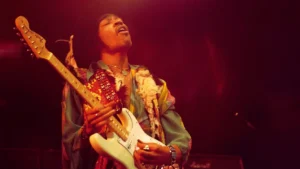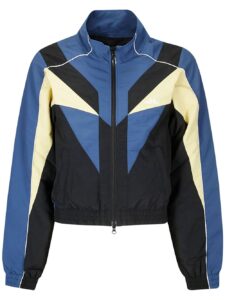The iconic Shark Hoodie from BAPE (A Bathing Ape) is making a bold comeback, and the announcement has sent ripples through the streetwear community. Originally designed by NIGO, the co-founder of BAPE and a trailblazer in modern streetwear, the Shark Hoodie has transcended its roots to become a cultural artifact. This revival, coinciding with a resurgence of early 2000s streetwear trends, is a nod to the hoodie’s legacy while situating it firmly in the present.
Here, we dive into the cultural, aesthetic, and historical significance of the Shark Hoodie, analyzing why its revival is more than just a fashion statement—it’s a reclamation of the roots of streetwear culture.
The Birth of an Icon
Introduced in the mid-2000s, the Shark Hoodie was emblematic of NIGO’s approach to design: bold, unapologetic, and steeped in pop culture references. The hoodie’s defining feature, a full-zip design with a shark face graphic running across the hood, turned a functional garment into an instant conversation piece. It was loud, brash, and unorthodox—a reflection of BAPE’s ethos.
The Shark Hoodie quickly became a status symbol, beloved by celebrities like Pharrell Williams, Kanye West, and Lil Wayne. It became a fixture in hip-hop culture, symbolizing a merger between music and fashion that was distinctly forward-thinking. For fans, owning a Shark Hoodie was akin to owning a piece of streetwear history.
Why Resurface the Shark Hoodie Now?
The decision to reintroduce the Shark Hoodie in 2024 feels strategic. Streetwear has undergone seismic shifts in recent years, with luxury brands like Louis Vuitton (under Virgil Abloh’s direction) and Gucci embracing elements of urban style. Meanwhile, nostalgia for early-2000s aesthetics has reached a fever pitch. The Shark Hoodie’s comeback aligns with this zeitgeist, tapping into both a longing for the past and a hunger for authenticity.
Moreover, NIGO’s legacy has been under renewed focus, thanks to his recent collaborations with Kenzo and the continued success of his Human Made label. By resurfacing the Shark Hoodie, BAPE is reminding the world of its foundational role in shaping streetwear as we know it.
The Aesthetic Evolution
While the original Shark Hoodie remains an indelible classic, the 2024 iteration is rumored to incorporate subtle updates that speak to contemporary fashion sensibilities. Early previews suggest enhanced materials, including organic cotton blends and high-tech fabrics, as well as a broader range of colors. A limited-edition version is said to feature embroidered details and hand-painted accents, pushing the hoodie into luxury territory.
Despite these tweaks, the core elements of the Shark Hoodie remain untouched: the menacing shark graphic, the bold WGM (World Gone Mad) lettering, and the camouflage prints. These elements are as much about branding as they are about storytelling. They encapsulate a sense of rebellion, individuality, and cultural commentary—traits that remain as relevant today as they were two decades ago.
The Shark Hoodie and Cultural Legacy
The Shark Hoodie’s influence extends beyond fashion. It represents a shift in how streetwear was perceived in the early 2000s, helping to elevate it from subculture to mainstream. It played a pivotal role in the democratization of luxury, showing that high-fashion aspirations could coexist with street-level authenticity.
For many, the hoodie also symbolized a rite of passage. It wasn’t just an item of clothing; it was a marker of identity. Wearing a Shark Hoodie meant aligning oneself with a particular lifestyle—one that celebrated creativity, risk-taking, and a disdain for conformity.
In the context of hip-hop culture, the Shark Hoodie became a canvas for self-expression. Artists and fans alike used it to project confidence and individuality, often pairing it with equally bold accessories and sneakers. Its full-zip design, which allowed wearers to completely conceal their face, even became a metaphor for anonymity and mystery in an increasingly digital world.
The Business of Nostalgia
The resurgence of the Shark Hoodie also highlights the power of nostalgia in driving fashion trends. Streetwear brands have increasingly turned to their archives, recognizing that reissues can be as impactful as new designs. For BAPE, the Shark Hoodie’s revival is both a business move and a cultural statement.
Limited drops and collaborations have become the norm in streetwear, and the Shark Hoodie’s relaunch will undoubtedly follow this model. Expect high-profile partnerships, perhaps even with artists or designers who have been vocal about their admiration for NIGO’s work. These collaborations will ensure that the hoodie remains relevant to younger audiences while still honoring its roots.
Critical Considerations: Has the Shark Lost Its Bite?
While the excitement surrounding the Shark Hoodie’s return is undeniable, it also raises questions about the risks of over-reliance on nostalgia. Can BAPE strike the right balance between honoring its legacy and innovating for the future? Will this revival appeal to today’s streetwear consumers, or will it alienate those who view it as a relic of the past?
Critics have pointed out that BAPE, like many legacy streetwear brands, has struggled to maintain its cultural cachet in the face of fierce competition from newer, more dynamic labels. The Shark Hoodie’s comeback could either reinvigorate the brand or reinforce perceptions that it is stuck in a bygone era.
Another potential pitfall is the hoodie’s exclusivity. While limited-edition drops create buzz, they also risk alienating fans who can’t afford to participate in the hype cycle. For a generation increasingly critical of fashion’s gatekeeping tendencies, this could pose a challenge.
The Future of BAPE and NIGO’s Influence
Regardless of how the Shark Hoodie is received, its revival is a testament to NIGO’s enduring influence. As a designer, he has always understood the intersection of fashion, music, and culture, creating pieces that resonate on multiple levels. His vision for the Shark Hoodie was never just about selling clothes—it was about crafting a narrative.
For BAPE, this moment represents an opportunity to reestablish itself as a leader in the streetwear space. By leveraging the Shark Hoodie’s iconic status, the brand can remind consumers of its legacy while charting a path forward. Whether through collaborations, new designs, or expanded product lines, the Shark Hoodie’s success will likely dictate BAPE’s next steps.
The Shark Swims Again
The Shark Hoodie’s return is more than just a fashion event—it’s a cultural milestone. It symbolizes the enduring power of streetwear to shape identities, tell stories, and bridge the gap between subculture and mainstream. For fans old and new, the 2024 iteration offers a chance to reconnect with a piece of history while participating in its evolution.
As BAPE resurfaces this iconic design, the stakes are high, but so are the rewards. The Shark Hoodie’s revival isn’t just about looking back—it’s about reclaiming its place at the forefront of streetwear. Whether it succeeds or not, one thing is certain: the Shark Hoodie has already cemented its legacy as one of the most influential pieces in modern fashion. And now, it’s ready to swim again.
No comments yet.








